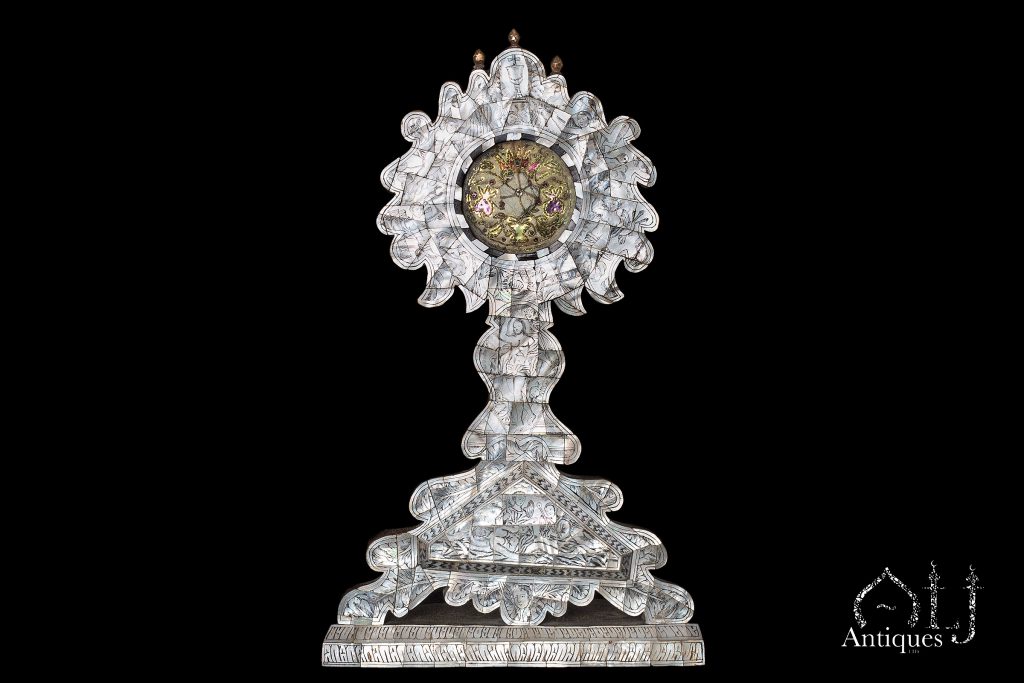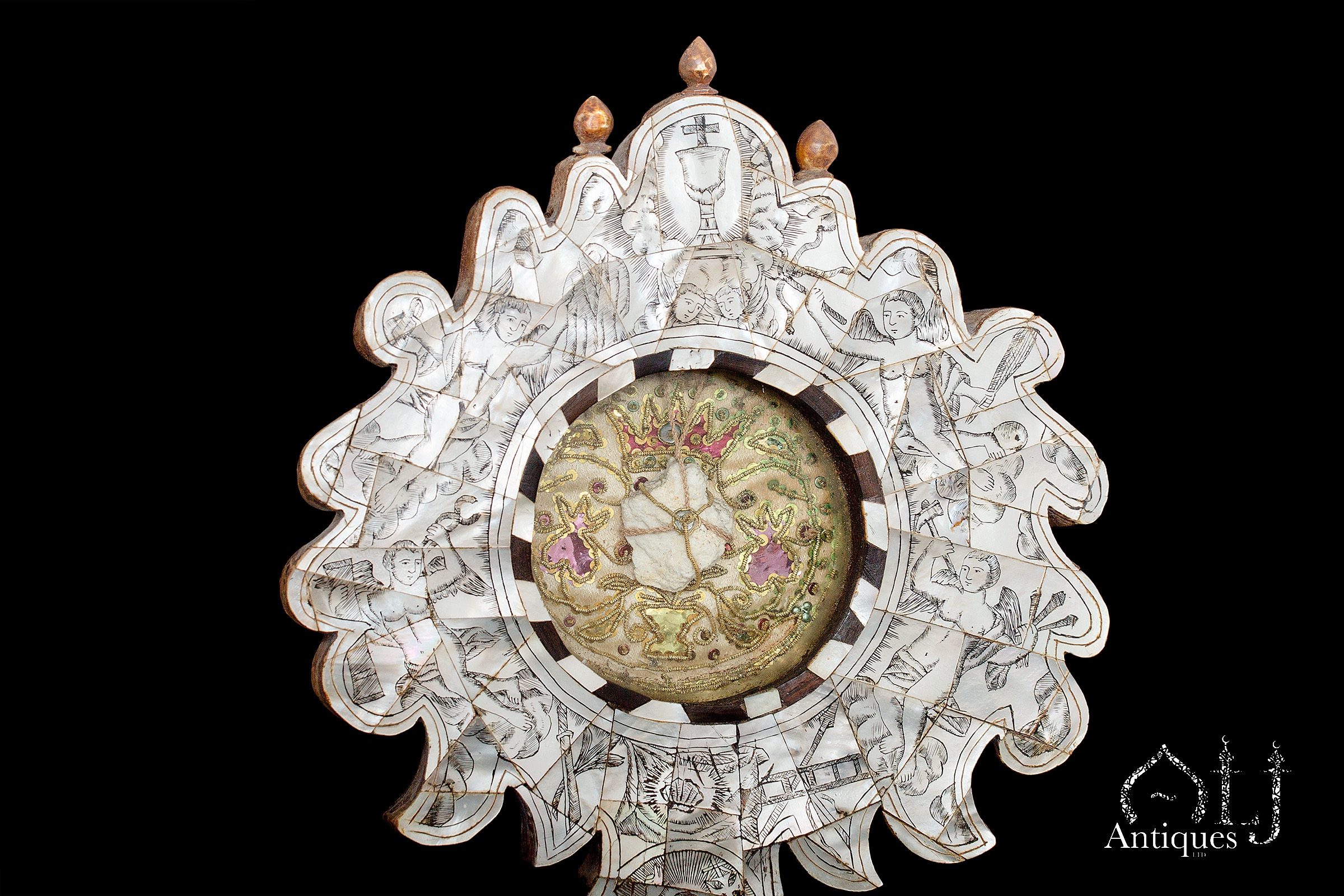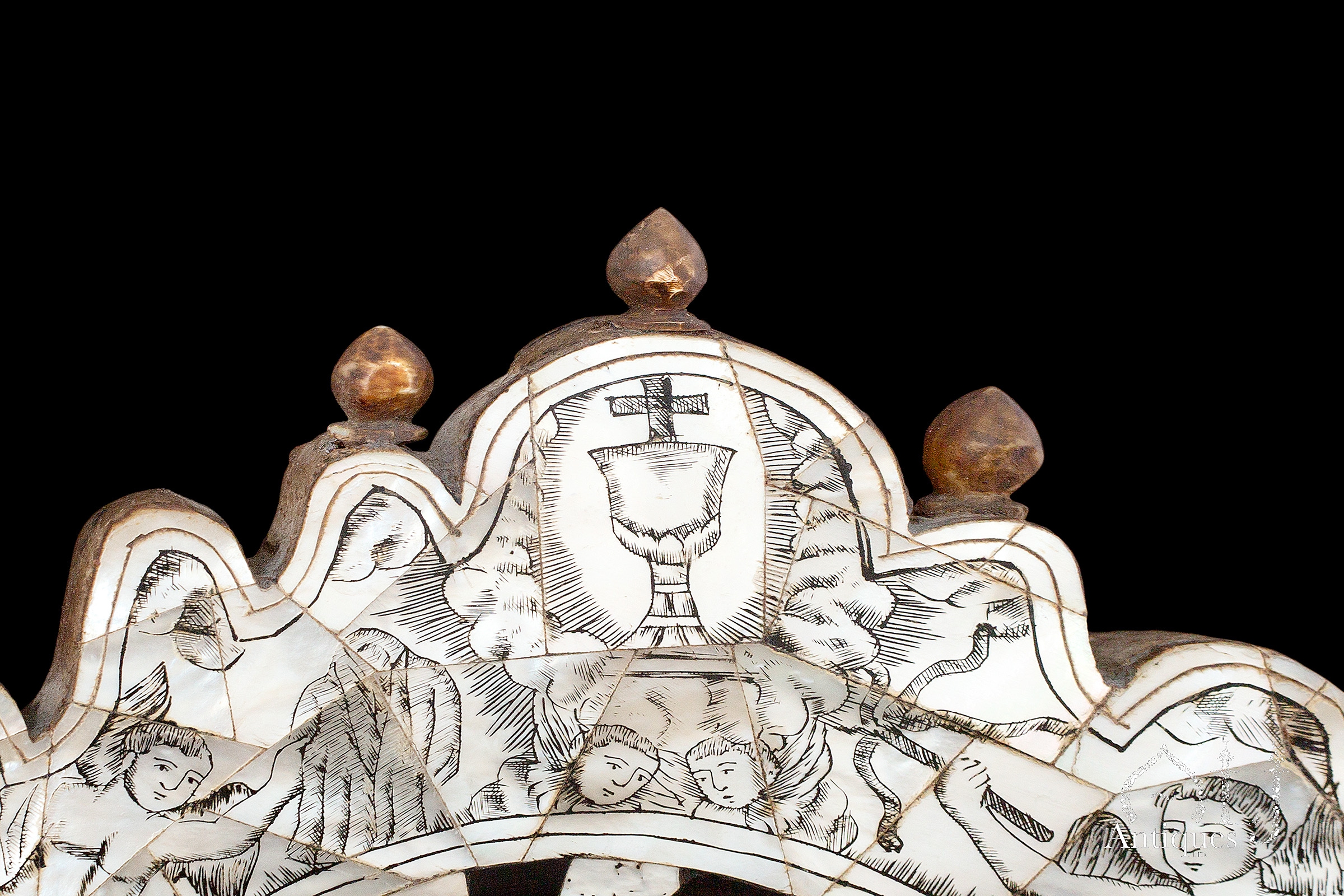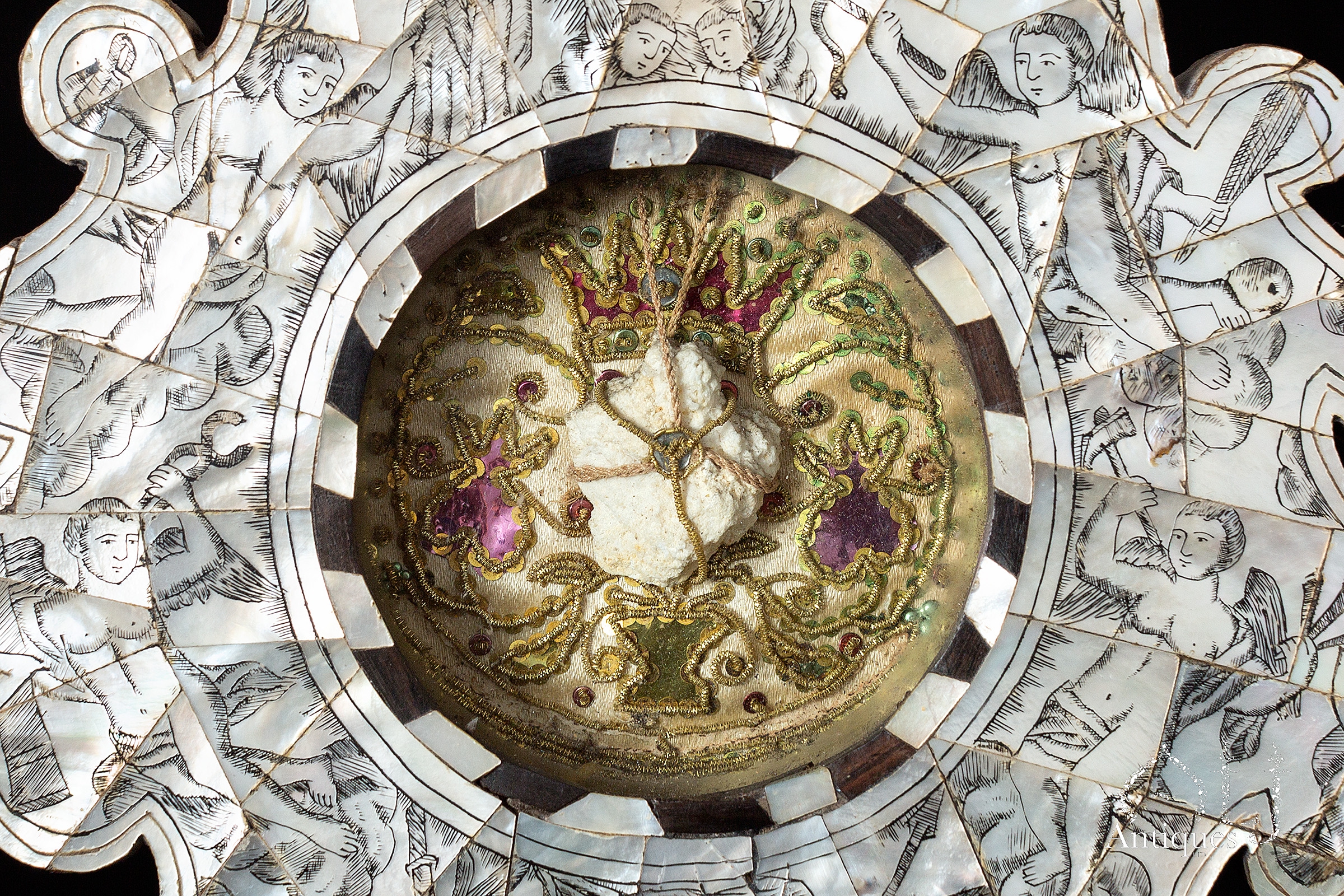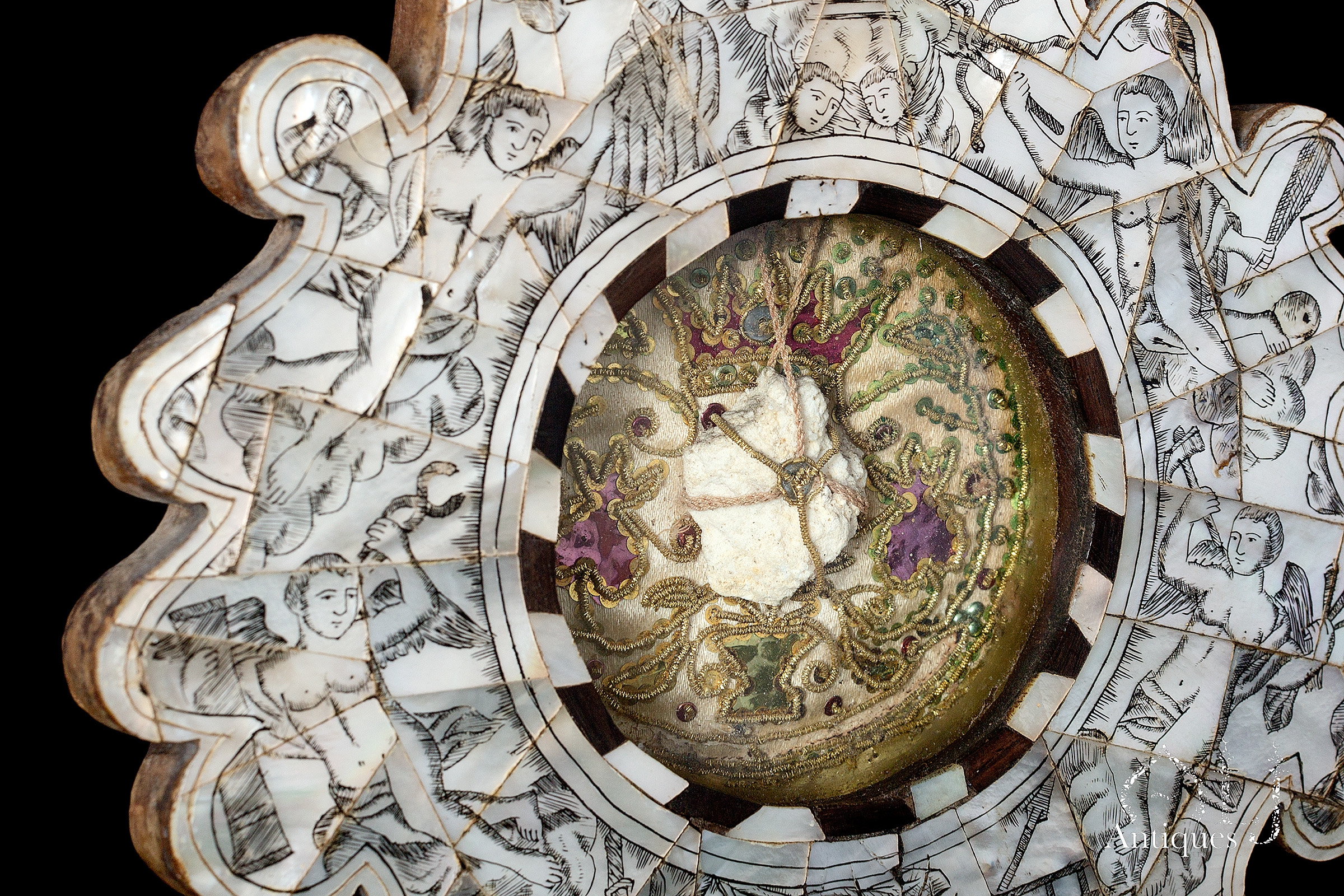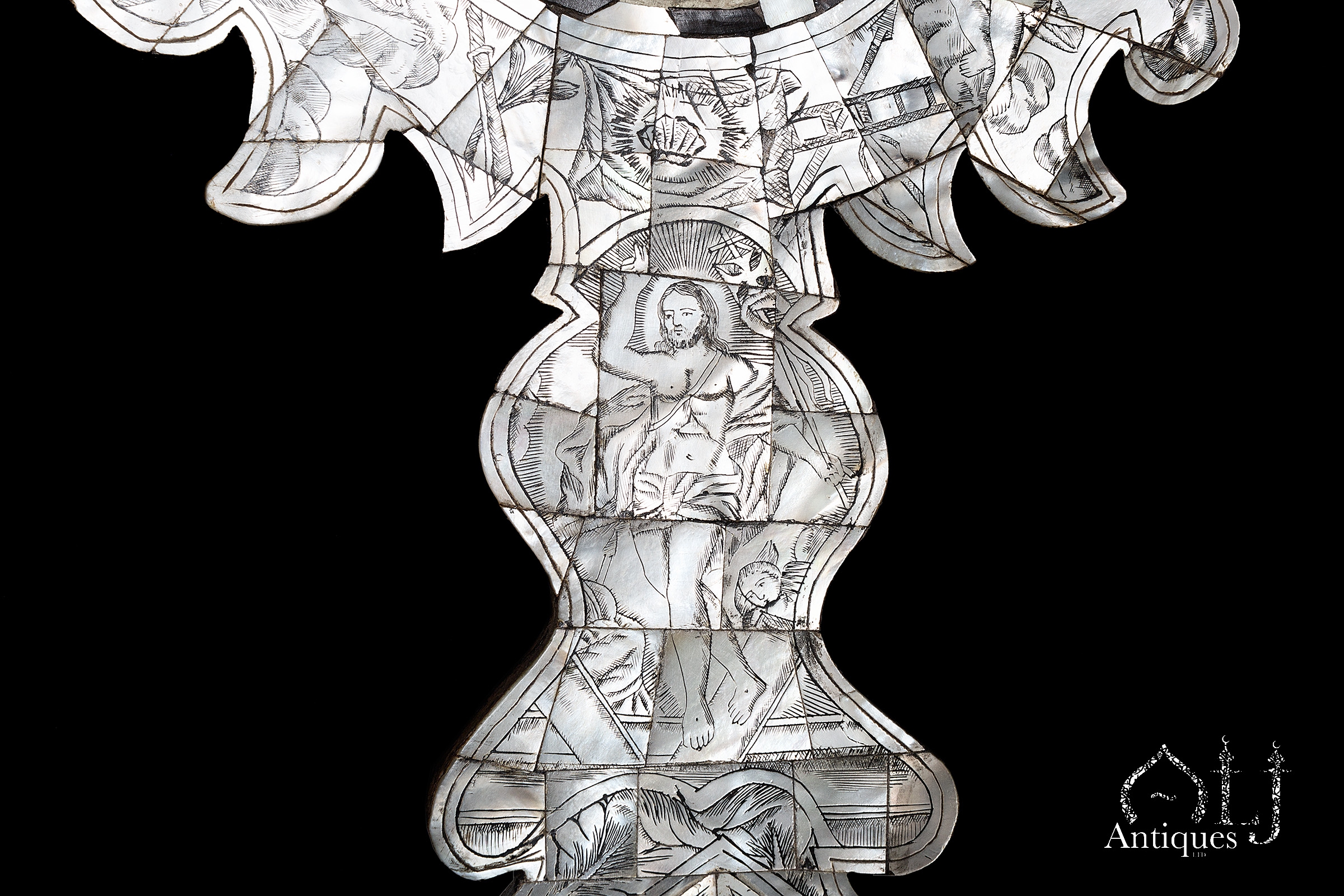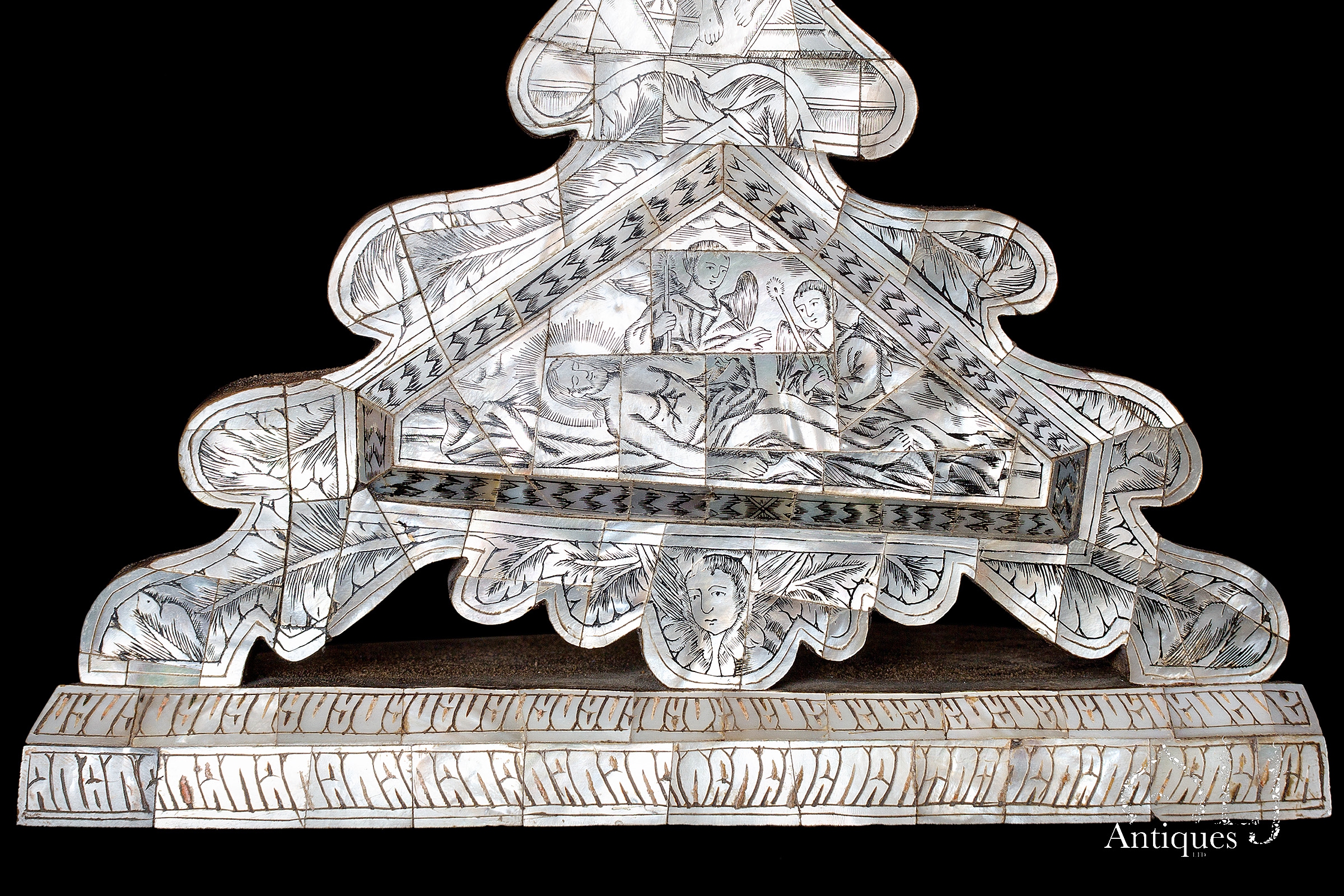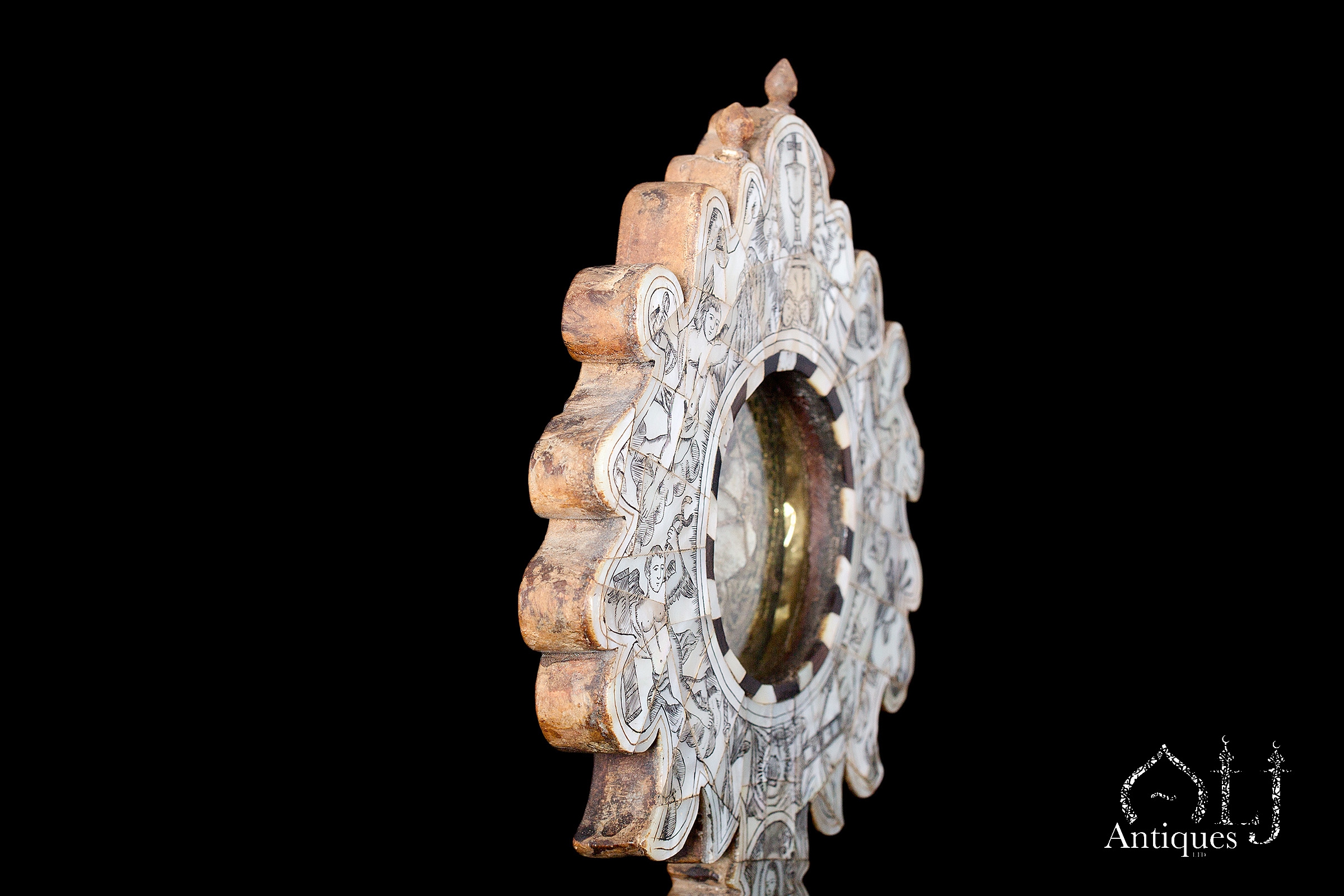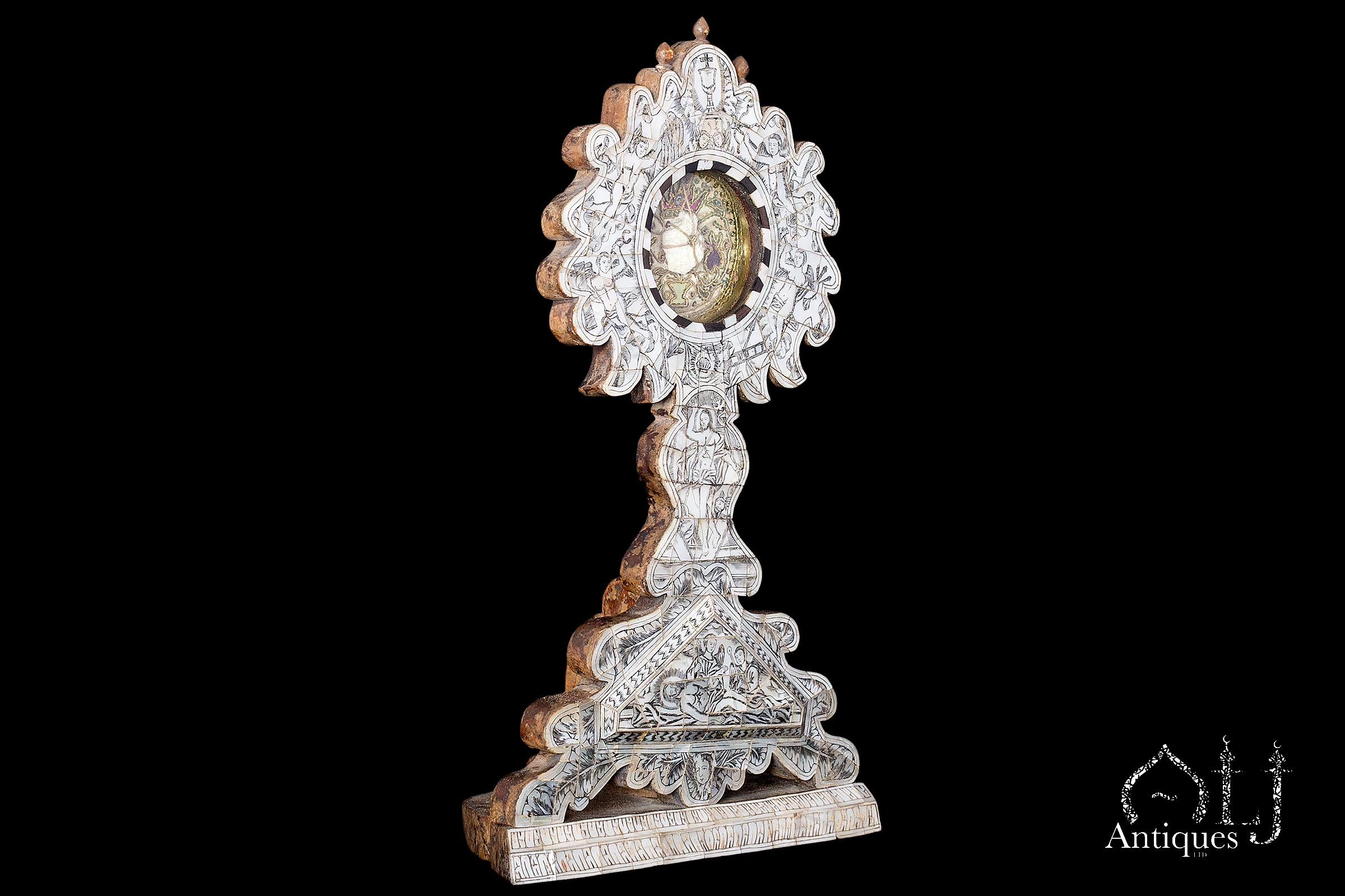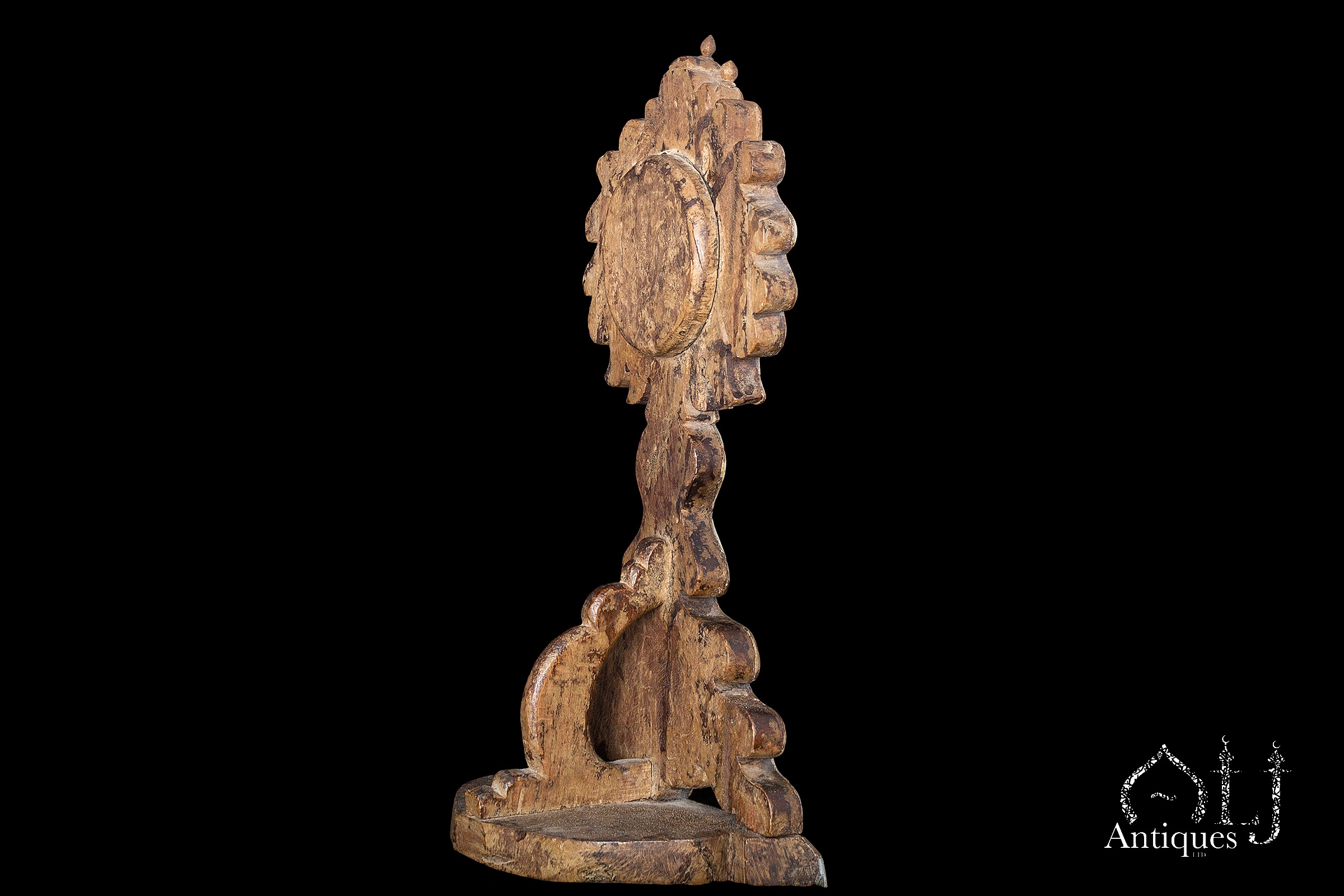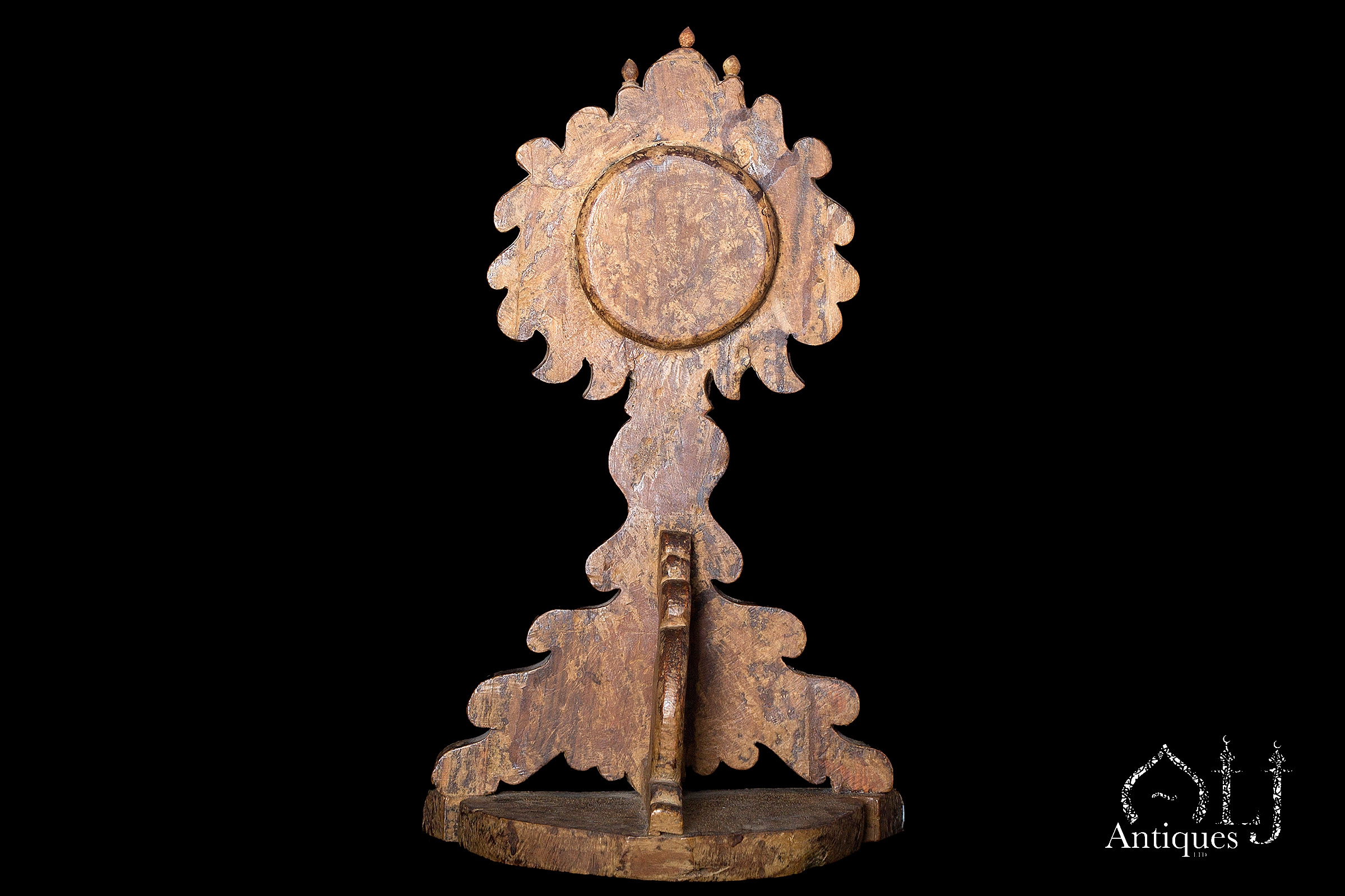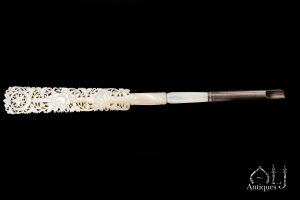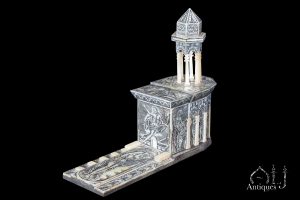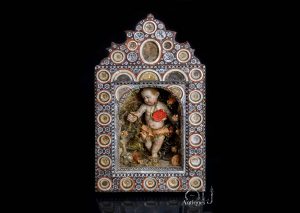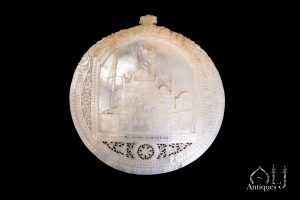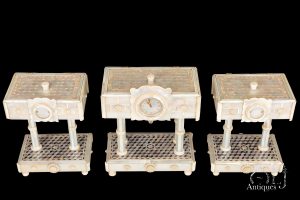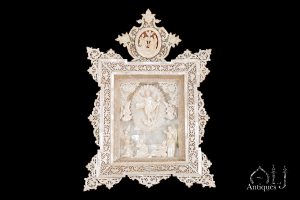Description
A very rare monstrance reliquary container is from the Holy Lands in Jerusalem, the model is of carved wood relic holder veneered with finely engraved mother of pearl tinged with red & black Lac decorated with various Christian scenes.
The Monstrance or (Ostensorium) is a certain type of an elegant and luxurious Reliquary container (object of piety) usually made out of expensive materials mainly used in the Roman Catholic churches, Anglican Churches and other High churches.
Our very rare type of Monstrance (Relic Holder) represents the typical high standards and quality that the talented craftsmen from the Holy lands can achieve by making this lavish monstrance from the given materials they possess and the delicate carpentry process they perform by carving the wood and having it veneered with finely cut and engraved mother of pearl and the decoration that they can master of various iconography of Christian scenes and occasionally painting the engraved surfaces of the mother of pearl with coloured Lac.
The current important rather large Relic compartment is set at the top of the Monstrance in the form of a large roundel carved within the wooden body of the Monstrance.
The Relic compartment is been beautifully decorated and lavishly furnished with typical fine needlework embroidery of Bethlehem, the yellow golden colour fine silk is set at the overall background of the compartment and been embroidered with a thin metallic golden colour thread (probably made out of gold or silver gilt) with a large and prominent Crown which is made of thin metal material, painted in red colour outlined with golden metal thread borders.
The golden Crown is topping the rather large white colour sacred Relic stone fragment which is been fixed at the centre of the compartment and been carefully fastened to the silky grounds with six golden metallic thread strings surrounded by two purple coloured metallic tulips or lilies shaped flowers also been outlined with golden metal thread borders, the flowers and branches are emerging from the golden pot representing the tree of life as a symbol of the eternal life and immortality.
The overall Relic decoration is been outlined with a round thin golden colour metallic ribbon shaped borders or frame (probably made out of solid gold or silver gilt).
In order to preserve the Holy Relic and its contents, the Relic compartment is been covered with a thin round mouth-blown glass and been fixated to the body of the wooden Monstrance with ebony and mother of pearl beading frame.
The contents of this Relic Compartment is actually self-telling and the important iconography which is been decorated, throughout the engraved and tinged with black lac on the finely cut pieces of mother of pearl surrounding the relic compartment like the depiction of the death and the resurrection of Jesus, the presence of the Ciborium chalice at the top of the Monstrance, the angels surrounding and guarding the Relic compartment all of which is a clear indication that the Holy large shred of stone fragment most probably had been taken from the sacred Sanctuaries of the Holy Sepulchre or from The Holy Tomb of Jesus it self (Aedicule).
By the allocation of the Crown on top of the Sacred Relic is a metaphoric expression and an acknowledgement by the artist who have made this Monstrance that Lord Jesus Christ is the king of God Kingdom.
The symbol of the crown also represents that Jesus will be wearing the promised crown in the heavens.
The following are other depictions of the holy Crown, which will be worn in the havens by Jesus Christ the King of Kings and the Lord of Lords.
The model is also been decorated with yet another depiction of the biblical story of the veil of Saint veronica.
The veil of Saint Veronica is a legendary woman from Jerusalem who had witnessed the suffering of Jesus while carrying his own cross to the Calvary Hill (Golgotha) the site where the crucifixion of Jesus took place, she had offered Jesus her kerchief to wipe his face, after which he had given it back with the imprinted image of his holy face.
In Christian Art the veil of Saint Veronica had been depicted in many different ways by various artists, the following are various examples of the various depictions of the veil of Saint Veronica.
The decoration of the vegetation leaves at the lower base of the Monstrance is been tinged with both black and red lac.
Three finials in the form of candle flames made out of polished and painted mother of pearl are being placed on top of the Monstrance.
The backside of the Monstrance has a round wooden base at the top carrying the Relic compartment contents.
For support and to be able to lift the Monstrance safely, from the back a wooden handle is been fitted on the half rounded shaped base.

